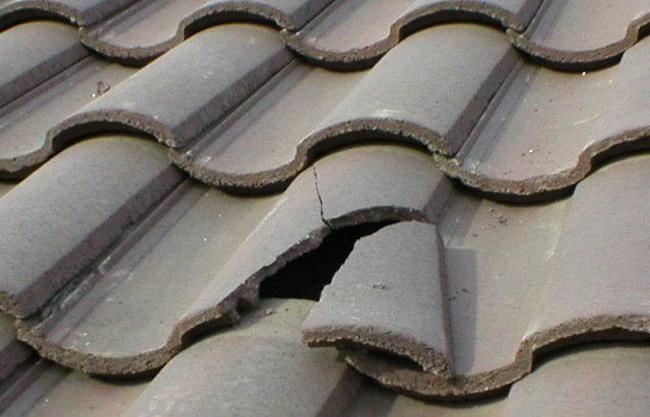
03 Apr Roof issues that may cause damp in your home
Moisture issues in your home can be caused by leaking pipes, rising moisture in your basement and of course, a leaky roof. In the case of a leaky roof, we call this penetrating damp because it penetrates the roof itself.
Penetrating damp is caused by water leaking through your roof. Gravity forces the water downwards. The water can run, or the moisture can spread, across roof beams and bracing down onto the roof plasterboard and down the walls.
On new builds it is often the case a leaky roof is caused by structural problems (poor workmanship) while in older buildings the causes can be any number of things from missing tiles to cracked pointing or eroded leadwork.
Tile issues
A cracked or poorly fitted roof tile is penetrable. Water will work its way through the smallest of gaps, perhaps at first only with a heavy downpour or wind-driven rain but over time with the slightest rainfall. The tile should be replaced with a new one as soon as able to solve the leak at this source.
If you have a missing tile the leak will be far more severe. You will often notice this with rainfall of any volume. A cracked or poorly fitted tile is a slower burner, which makes it an even more likely cause of damp in your home.
Felt or membrane issues
Underneath your roof tiles there will be felt or another membrane such as an EPDM membrane on newer buildings. This allows rainwater that gets past the tiles to run down a waterproof barrier into your gutters.
The membrane itself is protected by tiles along the stretch of the roof so shouldn’t be damaged here. However it is common for it to disintegrate around the eaves. Wind-driven water that would flow down the felt can then drip onto the soffit. It may then find its way into your home. The danger with this is the leak may go unnoticed for some time, causing a damp patch to form on your ceiling or walls.
Guttering issues
Gutters carry rainwater from your roof to drainage pipes. If your gutters are clogged with muck (an accumulation of dirt carried down your roof by the rainwater) this can cause a drip which can run down the exterior wall or down the soffit.
The danger with leaky gutters is water if left to collect on exterior walls will eventually breakdown the pointing and crack it. If it runs down the soffit this is an even bigger issue because soffits aren’t completely weatherproof. If you have damp on the second floor of your home and your gutters are dripping, they are a likely cause. Get them cleared as soon as possible and see how you get on.
Pointing issues
Pointing around chimney breasts, along the ridge of a roof and along the eaves is susceptible to cracking. If pointing is cracked, it is penetrable, and water will find its way through it and into your home.
The danger with pointing issues is they cause moisture to penetrate surfaces that aren’t supposed to get wet. We’re talking about the very structure of your roof and masonry work. It takes a long time for moisture caught here to dry out. This can cause damp, and if you are unlucky, costly structural issues too.
Pointing issues should be fixed as soon as possible, ideally during a period of warm and dry weather. It is not enough to ‘fill’ cracks. The pointing should be removed, the surface beneath that treated, and then new mortar should be used. This will ensure a good surface and hopefully fix your pointing issues for years to come.
Want advice?
The only way to rule out a roof issue being the cause of damp in your home is to have it inspected at roof level. If you are in Leeds, call us today on 0113 8941968 and we will come out to you at a convenient time.

Sorry, the comment form is closed at this time.